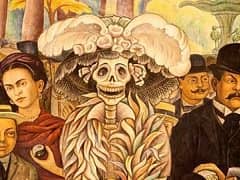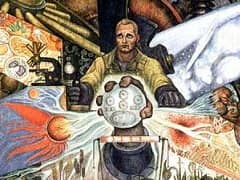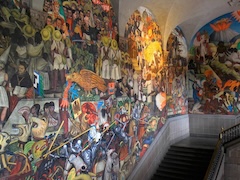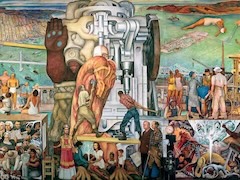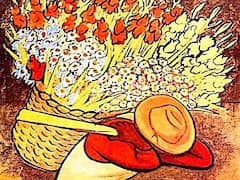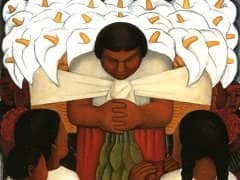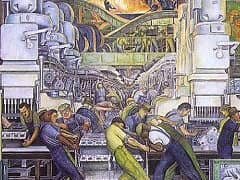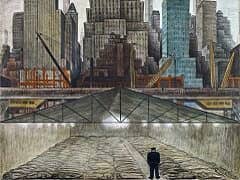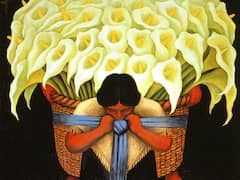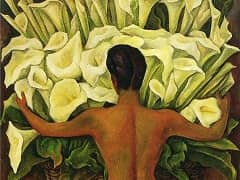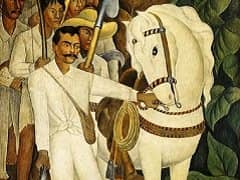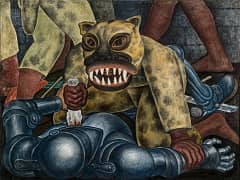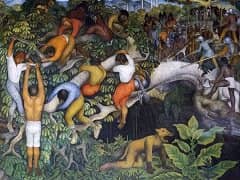Zapatista Landscape, 1915 by Diego Rivera

In 1915, Rivera painted what many critics believe is his Cubist masterpiece: Zapatista Landscape (The Guerrilla). Later, he would describe it as "probably the most faithful expression of the Mexican mood that I have ever achieved." The elements of this outdoor still life included a serape, a sombrero, a rifle, a cartridge belt, a wooden ammunition box, and the mountains of Mexico. The central image floats in space, its planes overlapping or diminishing in surprising ways. What could be the shadow of the gun is painted white. The reds are very red, the blues are an intense luxurious blue: as they are in Mexico. The sombrero, combined with a shape that suggests an all-seeing eye, asks the viewer to look for a face; it's as elusive as a Zapatista. Clumps of trees are painted densely, viridian green spotted or scumbled over black: good cover for snipers. In the lower-right-hand corner there's an unfolded piece of blank paper, attached to the canvas by a nail, painted in a skillful trompe-l'oeil manner: it's a kind of manifesto from the millions of Mexicans who remained illiterate.
Rivera continued working as a Cubist after Zapatista Landscape and made some handsome canvases, but didn't ever quite surpass this vision of distant Mexico. In that single painting, he established a valid claim to being one of the most successful of all the Cubists, not just another follower of an artistic fashion. As a result, he was now even more heavily involved in the theoretical debates in wartime Paris, all those attempts to create a mathematical basis for art, to establish rules.

